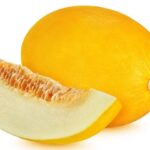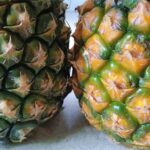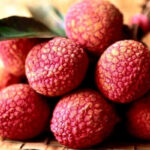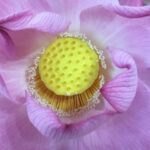The lychee season is upon us, and it’s time to indulge in this delicious fruit. However, not everyone knows how to pick the sweetest and most delicious lychees, as they often fall prey to pests and rot. Let’s explore some tips to choose the best lychees and avoid those with pest issues.
1. How to Choose Fresh and Delicious Lychees Without Pest Issues
Observe the Outer Skin
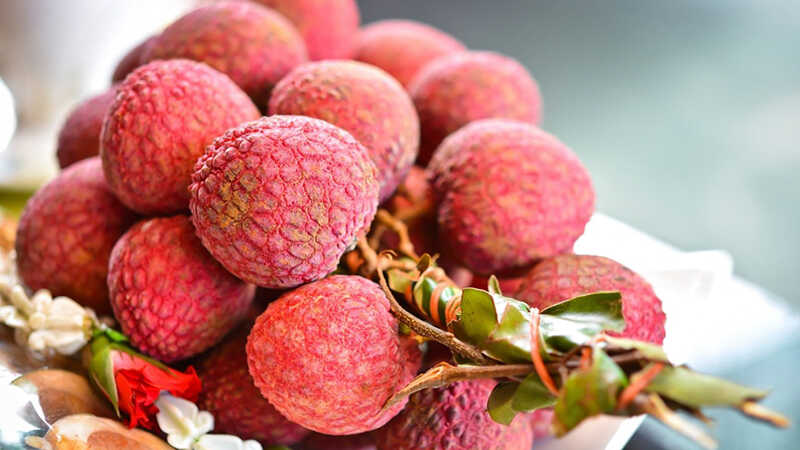
The best lychees will have a reddish-pink hue and a round shape. Lychees are typically smaller than their hybrid counterparts, only about 70% in size. The hybrids tend to be longer and more oval-shaped, with a deeper red color.
A ripe lychee will have smooth spines, and the sharper and more abundant they are, the tarter the fruit will be.
Avoid lychees with dark spots or black marks on the skin, especially near the stem. These are indications of overripeness or decay.
Opt for clusters of lychees with fresh branches and green leaves. Steer clear of clusters with dry, withered, or easily breakable branches and dry or wilted leaves.
Feel the Fruit
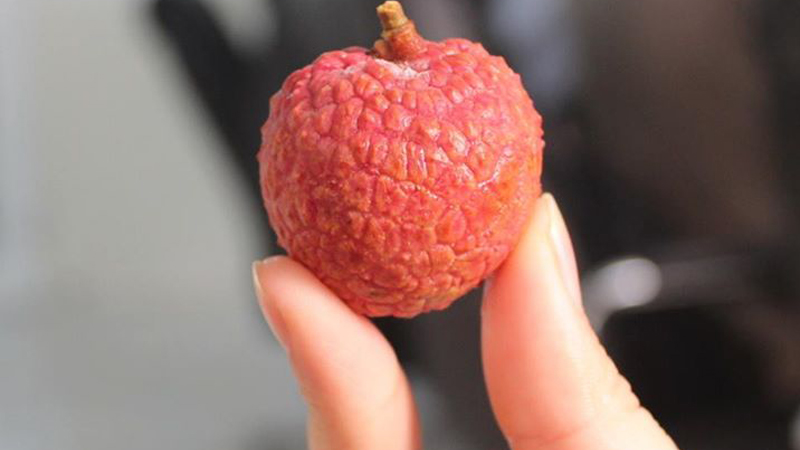
Fresh lychees have a bouncy texture when touched, feeling slightly soft yet firm.
If a lychee feels hard, it’s unripe, and if it feels soft and lacks bounce, it’s likely overripe or old.
Smell the Lychees

Even though the scent is subtle, lychees have a distinct aroma. Ripe lychees will emit a pleasant, gentle fragrance.
Avoid lychees with a sour, fermented, or unusual smell, as they may be spoiled or past their prime.
Peel the Lychees
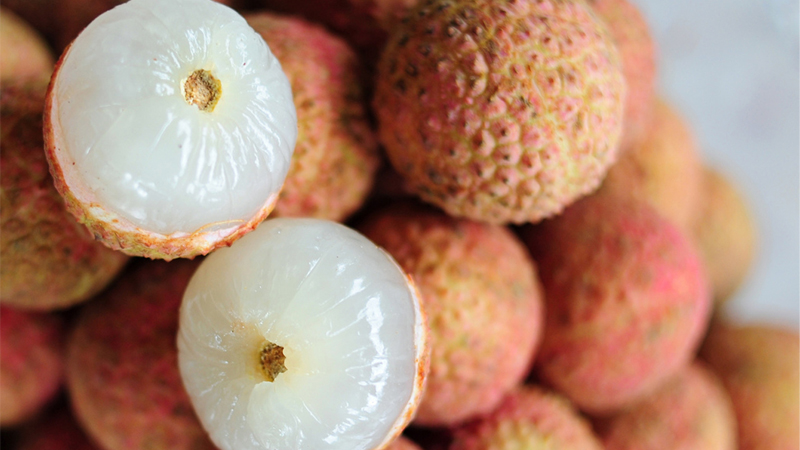
If possible, peel one or two lychees from the cluster. A perfectly ripe lychee will have the following characteristics:
– The stem is white and firm, with no signs of decay or pests.
– The skin peels off easily and feels crisp and slightly dry.
– There is no leakage of juice during peeling, and the flesh looks juicy and translucent.
If the skin is tough to peel, the stem is discolored, there is excessive juice leakage, and the flesh appears less translucent, the lychee is likely overripe or on the verge of spoilage.
Examine the Seeds
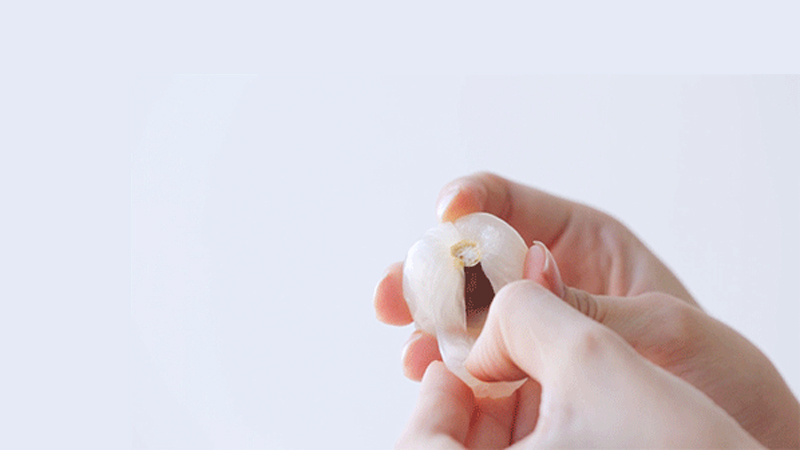
After peeling, gently separate the flesh from the seed.
– Ripe lychee flesh is soft, translucent, and juicy, with a delicate fragrance. It should start leaking juice when peeled, and the seeds are small.
– If the seeds are difficult to separate, appear large, and the flesh is mushy, lacks fragrance, or has an odd smell, it’s best to avoid those lychees.
Tip for Storing Lychees
Once you’ve selected the freshest lychees, it’s essential to store them properly to retain their nutritional value.
Wash the lychees thoroughly to remove any toxins or dirt on the skin, and discard any damaged or leaking fruits.
You can store the washed lychees in a plastic bag in the refrigerator’s crisper drawer for gradual consumption. Alternatively, keep them in a cool, dry place, avoiding excessive moisture or mold. However, don’t store them for too long, as they will lose their nutritional value and spoil.
For reference:
I hope these tips help you select the freshest and most delicious lychees, free from pest issues, for your family to enjoy.
For further reading:
Should You Buy Yellow Melon with or without the Stem?
Selecting the perfect cantaloupe can be a tricky task, and many are often perplexed by the age-old question: to stem or not to stem? The age-old dilemma of whether to choose a cantaloupe with a attached or detached stem has divided shoppers. The decision can make or break your taste experience, so it’s time to uncover the secrets to selecting the sweetest, most mouth-watering melon.
Fresh and Dried Lotus Seeds for Year-Round Enjoyment’>The Ultimate Guide to Storing Fresh and Dried Lotus Seeds for Year-Round Enjoyment
Lotus seeds are nutritional powerhouses, offering a plethora of health benefits. But how do you ensure these delicate seeds retain their freshness and nutritional value over an extended period? Well, worry not! We’ve got you covered with our expert tips and tricks to prolong the lifespan of these delicious and wholesome treats.

























